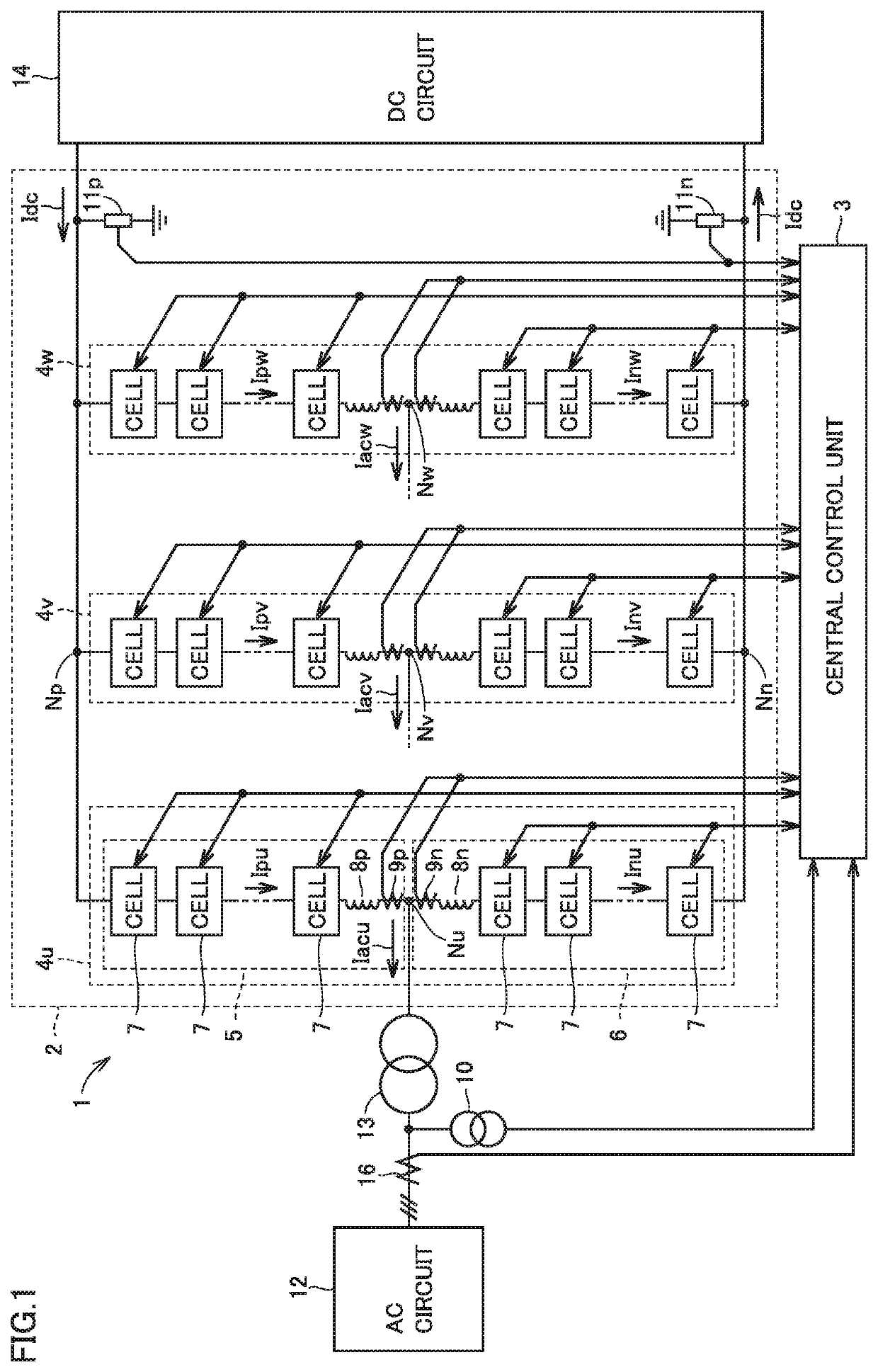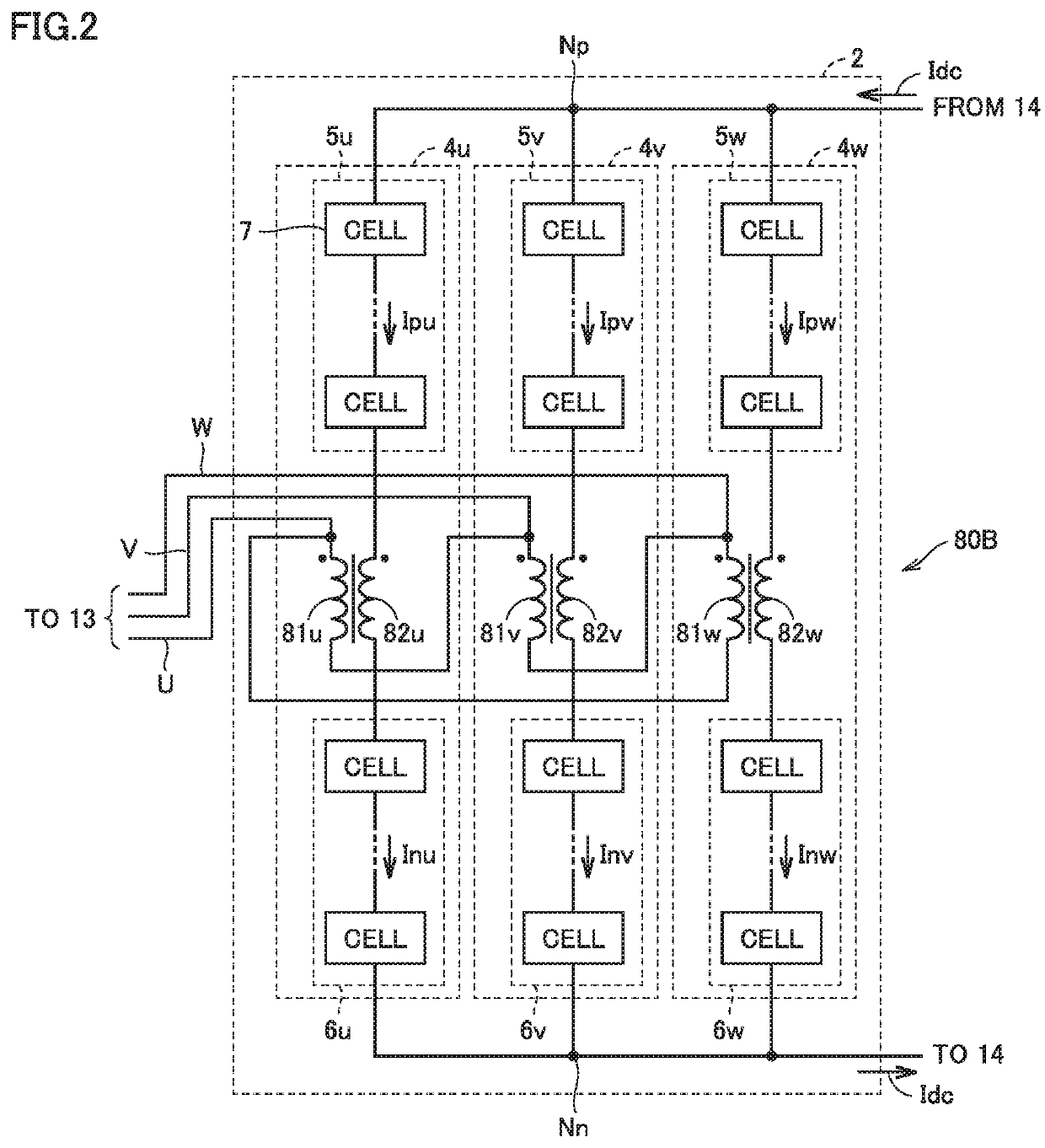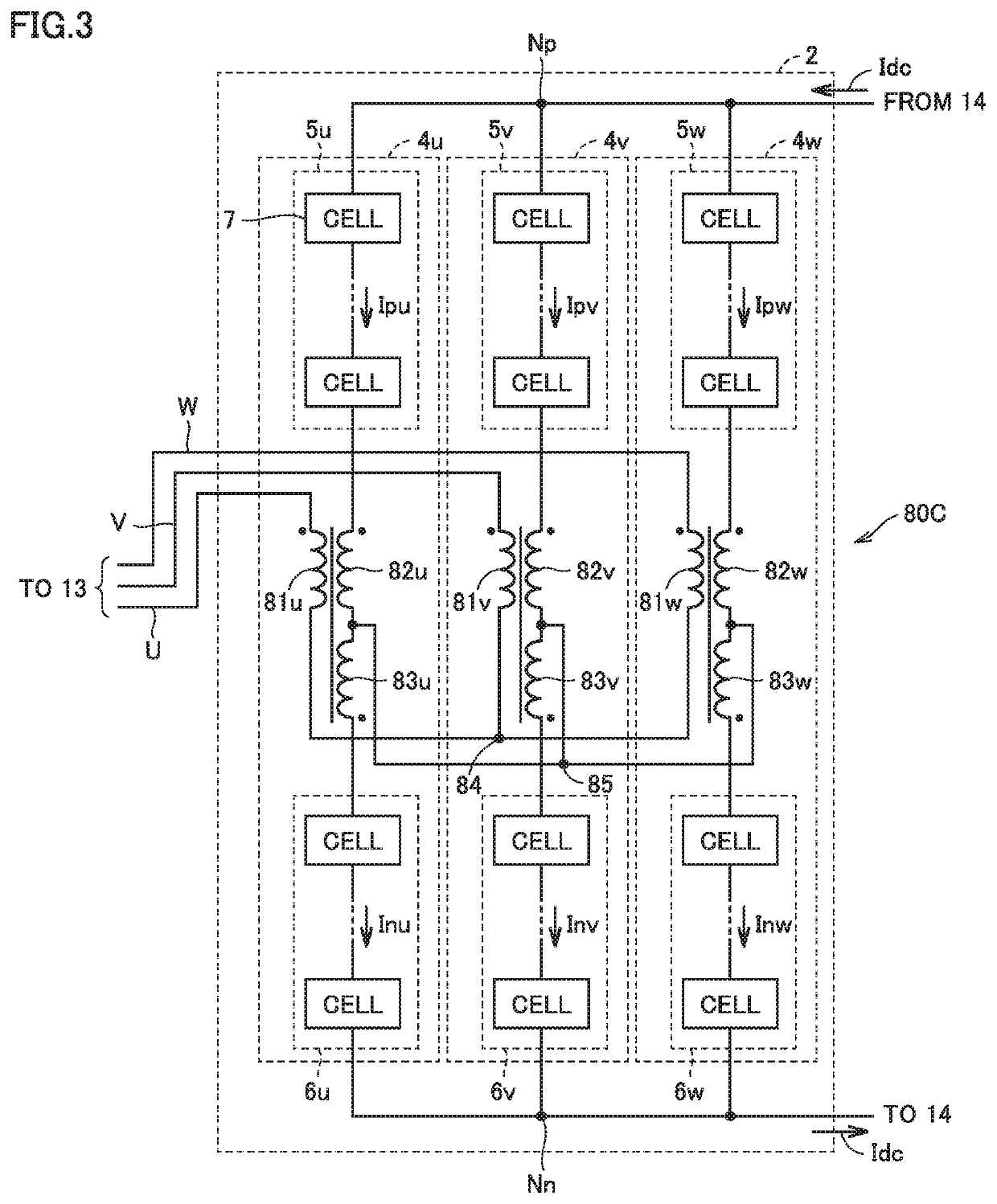Power conversion device
- Summary
- Abstract
- Description
- Claims
- Application Information
AI Technical Summary
Benefits of technology
Problems solved by technology
Method used
Image
Examples
first embodiment
[0023][Schematic Configuration of Power Conversion Device]
[0024]FIG. 1 shows a schematic configuration example of a power conversion device in a first embodiment. Referring to FIG. 1, a power conversion device 1 includes leg circuits 4u, 4v, 4w (which may be referred to non-specifically as leg circuit 4) that are main circuits, and a central control unit 3. The whole of leg circuits 4u, 4v, 4w is referred to as power conversion circuitry 2 in the present embodiment.
[0025]Leg circuit 4 is provided for each of a plurality of phases of AC, and connected between an AC circuit 12 and a DC circuit 14 for performing power conversion between the AC circuit and the DC circuit. AC circuit 12 shown in FIG. 1 is a three-phase AC circuit, and three leg circuits 4u, 4v and 4w are provided for U phase, V phase and W phase, respectively.
[0026]AC terminals Nu, Nv, Nw provided respectively in leg circuits 4u, 4v, 4w are each connected through an interconnection transformer 13 to AC circuit 12. AC cir...
second embodiment
[0100]In the first embodiment, each converter cell 7 is formed of half-bridge-type bridge circuit 30. In the following, each converter cell 7 formed of a full-bridge-type or three-quarter-type bridge circuit is described. Either circuit configuration produces similar effects to those of the first embodiment. In the following, the differences from the first embodiment are mainly described, and similarities are not described repeatedly.
[0101][Configuration of Full-Bridge-Type Bridge Circuit]
[0102]FIG. 9 shows another configuration example of a converter cell forming each leg circuit in FIG. 1. Converter cell 7 in FIG. 9 is different from converter cell 7 in FIG. 6 in that a full-bridge-type bridge circuit 30A is provided instead of half-bridge-type bridge circuit 30. In the following, the differences from bridge circuit 30 in FIG. 6 are mainly described, and similarities to the case of FIG. 6 are denoted by the same reference characters and are not described repeatedly.
[0103]Converter...
third embodiment
[0115]In a third embodiment, an example in which the power conversion device described in the first embodiment is applied to a reactive power compensation device referred to as a STATCOM (Static Synchronous Compensator) is described.
[0116]FIG. 11 shows a configuration example of a STATCOM of a Δ connection system. Referring to FIG. 11, a STATCOM 60 is configured such that arm circuits 61, 62, 63 each formed of a plurality of cascaded converter cells 7 are delta connected. Each of arm circuits 61, 62, 63 may be provided with a reactor 64 in series with converter cells 7. STATCOM 60 is connected through a transformer 65 to a transmission line 66 provided in AC circuit 12 (AC power system).
[0117]Each of converter cells 7 forming arm circuits 61, 62, 63 is configured as illustrated in FIG. 9 of the second embodiment. Thus, switching elements 35A, 35B, 41A, 41B forming the lower arm (i.e., second arm 34 and fourth arm 40) of full-bridge-type bridge circuit 30A can be used instead of a co...
PUM
 Login to View More
Login to View More Abstract
Description
Claims
Application Information
 Login to View More
Login to View More - R&D
- Intellectual Property
- Life Sciences
- Materials
- Tech Scout
- Unparalleled Data Quality
- Higher Quality Content
- 60% Fewer Hallucinations
Browse by: Latest US Patents, China's latest patents, Technical Efficacy Thesaurus, Application Domain, Technology Topic, Popular Technical Reports.
© 2025 PatSnap. All rights reserved.Legal|Privacy policy|Modern Slavery Act Transparency Statement|Sitemap|About US| Contact US: help@patsnap.com



